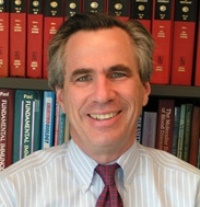
Robert Siliciano
733 N. Broadway
MRB 879
Baltimore MD 21205
For the 34 million people infected with HIV-1, the best current hope for avoiding the fatal consequences of the infection lies in treatment with antiretroviral therapy (ART), which consists of combinations of three drugs that inhibit specific steps in the virus life cycle. The benefits of ART in reducing the morbidity and mortality are clear, but ART is not curative. In 1995, our laboratory provided the first demonstration that latently infected CD4+ T cells were present in patients with HIV-1 infection. We later found that latently infected cells persist indefinitely even in patient on prolonged ART. These studies indicated that eradication of HIV-1 infection with ART alone would never be possible. The latent reservoir for HIV-1 in resting CD4+ T cells is now widely recognized as the major barrier to curing HIV-1 infection and is the subject of an intense international research effort. Our laboratory has gone on to characterize the different forms of HIV-1 that persist in patients on ART and to explore potential strategies for eradicating the virus. In particular, we are searching for and evaluating drugs that target the latent reservoir. We are also developing assays that can be used to monitor the elimination of this reservoir in patients participating in eradication trials. The laboratory is also interested in the basic pharmacodynamic principles that explain how antiretroviral drugs work. We have recently uncovered a previously unrecognized form of intermolecular cooperatively that explains why certain classes of antiretroviral drugs are so effective at inhibiting viral replication. We are using this discovery along with experimental and computational approaches to develop improved therapies for HIV-1 infection and to understand and prevent drug resistance. Finally we are studying the immunology of HIV-1 infection, and in particular, the ability of some patients to control the infection without ART.
Board NB1, Yuan Z, Wu F, Moskovljevic M, Ravi M, Sengupta S, Mun SS, Simonetti FR, Lai J, Tebas P, Lynn K, Hoh R, Deeks SG, Siliciano JD, Montaner LJ, Siliciano RF. Bispecific antibodies promote natural killer cell-mediated elimination of HIV-1 reservoir cells. Nature Immunol. 2023 In press.
Kumar MR, Fray EJ, Bender AM, Zitzmann C, Ribeiro RM, Perelson AS, Barouch DH, Siliciano JD, Siliciano RF. Biphasic decay of intact SHIV genomes following initiation of antiretroviral therapy complicates analysis of interventions targeting the reservoir. Proc Natl Acad Sci U S A. 2023 120(43):e2313209120.
McMyn NF, Varriale J, Fray EJ, Zitzmann C, MacLeod H, Lai J, Singhal A, Moskovljevic M, Garcia MA, Lopez BM, Hariharan V, Rhodehouse K, Lynn K, Tebas P, Mounzer K, Montaner LJ, Benko E, Kovacs C, Hoh R, Simonetti FR, Laird GM, Deeks SG, Ribeiro RM, Perelson AS, Siliciano RF, Siliciano JM. The latent reservoir of inducible, infectious HIV-1 does not decrease despite decades of antiretroviral therapy. J Clin Invest. 2023 133(17):e171554.
Sengupta S, Zhang J, Reed MC, Yu J, Kim A, Boronina TN, Board NL, Wrabl JO, Shenderov K, Welsh RA, Yang W, Timmons AE, Hoh R, Cole RN, Deeks SG, Siliciano JD, Siliciano RF, Sadegh-Nasseri S. A cell-free antigen processing system informs HIV-1 epitope selection and vaccine design. J Exp Med. 2023 220(7):e20221654.
Fray EJ, Wu F, Simonetti FR, Zitzmann C, Sambaturu N, Molina-Paris C, Bender AM, Liu PT, Ventura JD, Wiseman RW, O’Connor DH, Geleziunas R, Leitner T, Ribeiro RM, Perelson AS, Barouch DH, Siliciano JD, Siliciano RF. Antiretroviral therapy reveals triphasic decay of intact SIV genomes and persistence of ancestral variants. Cell Host Microbe. 2023 31(3):356-372.
Dai W, Wu F, McMyn N, Song B, Walker-Sperling VE, Varriale J, Zhang H, Barouch DH, Siliciano JD, Li W, Siliciano RF. Genome-wide CRISPR screens identify combinations of candidate latency reversing agents for targeting the latent HIV-1 reservoir. Sci Transl Med. 2022 14(667):eabh3351.
White JA, Kufera JT, Bachmann N, Dai W, Simonetti FR, Armstrong C, Lai J, Beg S, Siliciano JD, Siliciano RF. Measuring the latent reservoir for HIV-1: Quantification bias in near full-length genome sequencing methods. PLoS Pathog.2022 18(9):e1010845.
Sengupta S, Board NL, Wu F, Moskovljevic M, Douglass J, Zhang J, Reinhold BR, Duke-Cohan J, Yu J, Reed MC, Tabdili Y, Azurmendi A, Fray EJ, Zhang H, Hsiue EH, Jenike K, Ho YC, Gabelli SB, Kinzler KW, Vogelstein B, Zhou S, Siliciano JD, Sadegh-Nasseri S, Reinherz EL, Siliciano RF. TCR-mimic bispecific antibodies to target the HIV-1 reservoir. Proc Natl Acad Sci U S A. 2022 119(15):e2123406119.
White JA, Simonetti FR, Beg S, McMyn NF, Dai W, Bachmann N, Lai J, Ford WC, Bunch C, Jones JL, Ribeiro RM, Perelson AS, Siliciano JD, Siliciano RF. Complex decay dynamics of HIV virions, intact and defective proviruses, and 2LTR circles following initiation of antiretroviral therapy. Proc Natl Acad Sci U S A. 2022 119(6):e2120326119.
Simonetti FR, Zhang H, Soroosh GP, Duan J, Rhodehouse K, Hill AL, Beg SA, McCormick K, Raymond HE, Nobles CL, Everett JK, Kwon KJ, White JA, Lai J, Margolick JB, Hoh R, Deeks SG, Bushman FD, Siliciano JD, Siliciano RF. Antigen-driven clonal selection shapes the persistence of HIV-1-infected CD4+ T cells in vivo. J Clin Invest. 2021 131(3):e145254.
Bertagnolli LN, Varriale J, Sweet S, Brockhurst J, Simonetti FR, White J, Beg S, Lynn K, Mounzer K, Frank I, Tebas P, Bar KJ, Montaner LJ, Siliciano RF, Siliciano JD. Autologous IgG antibodies block outgrowth of a substantial but variable fraction of viruses in the latent reservoir for HIV-1. Proc Natl Acad Sci U S A. 2020 117(50):32066-32077.
